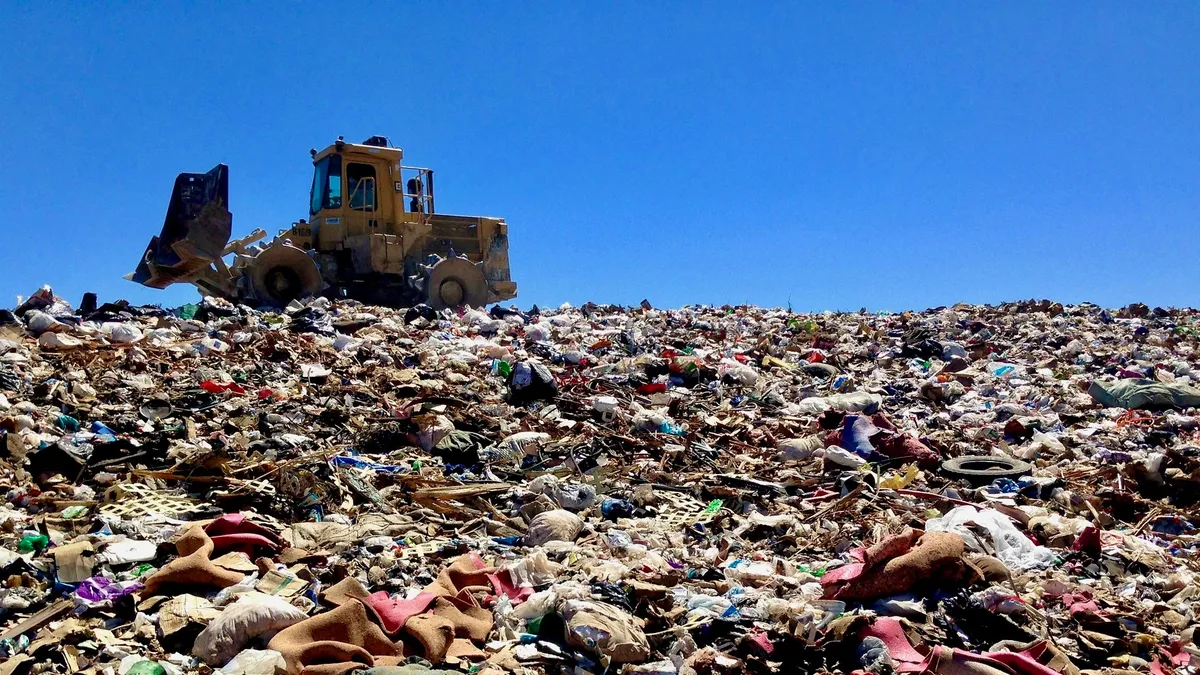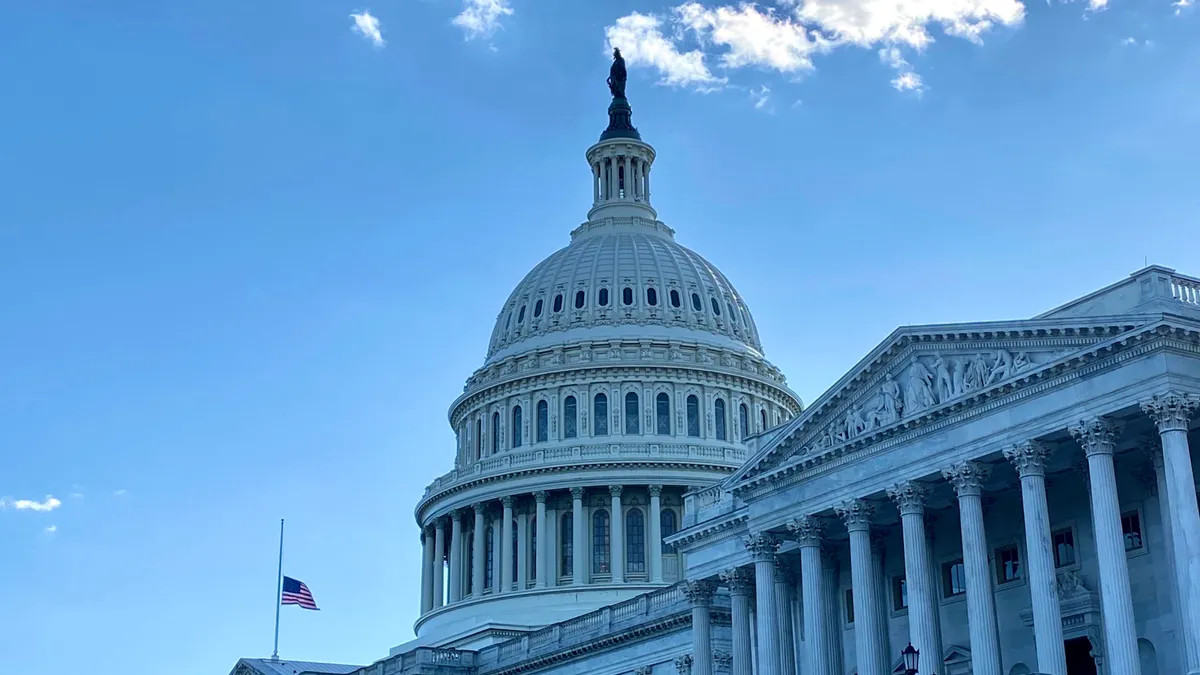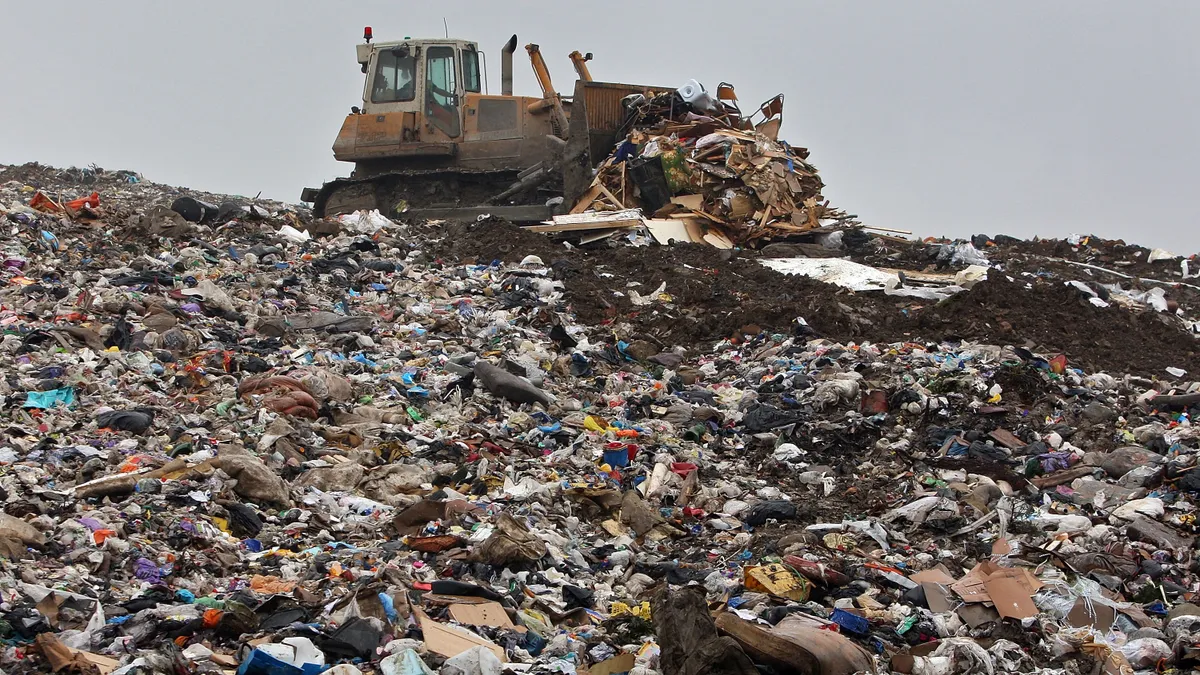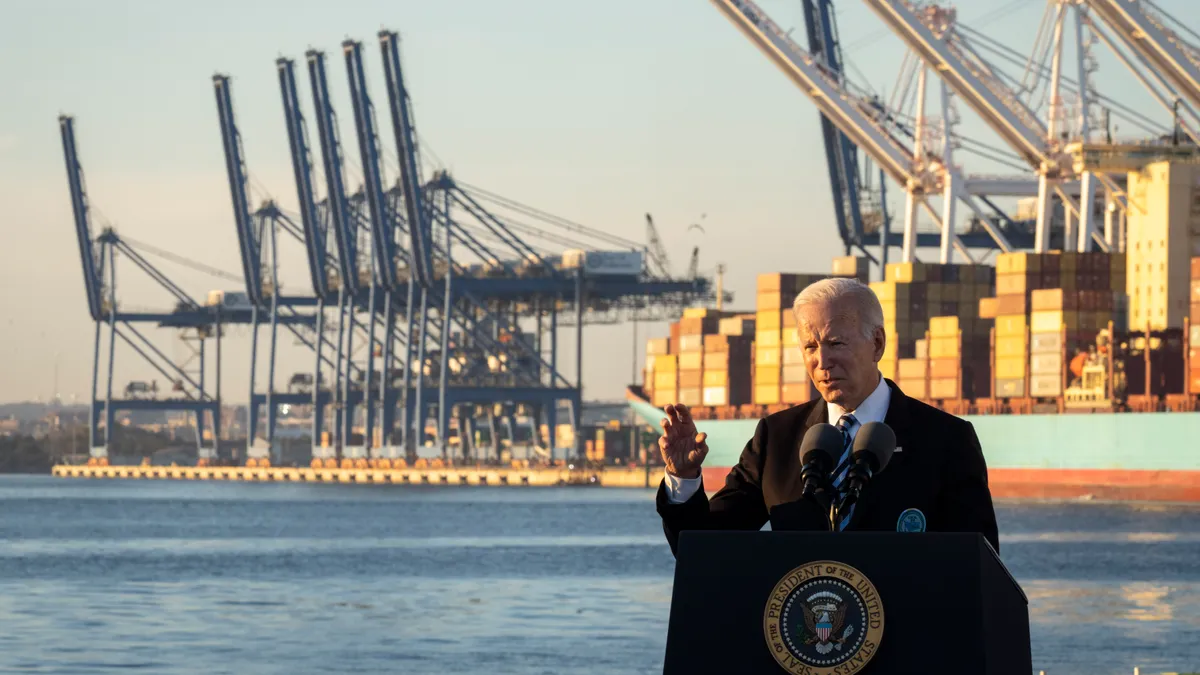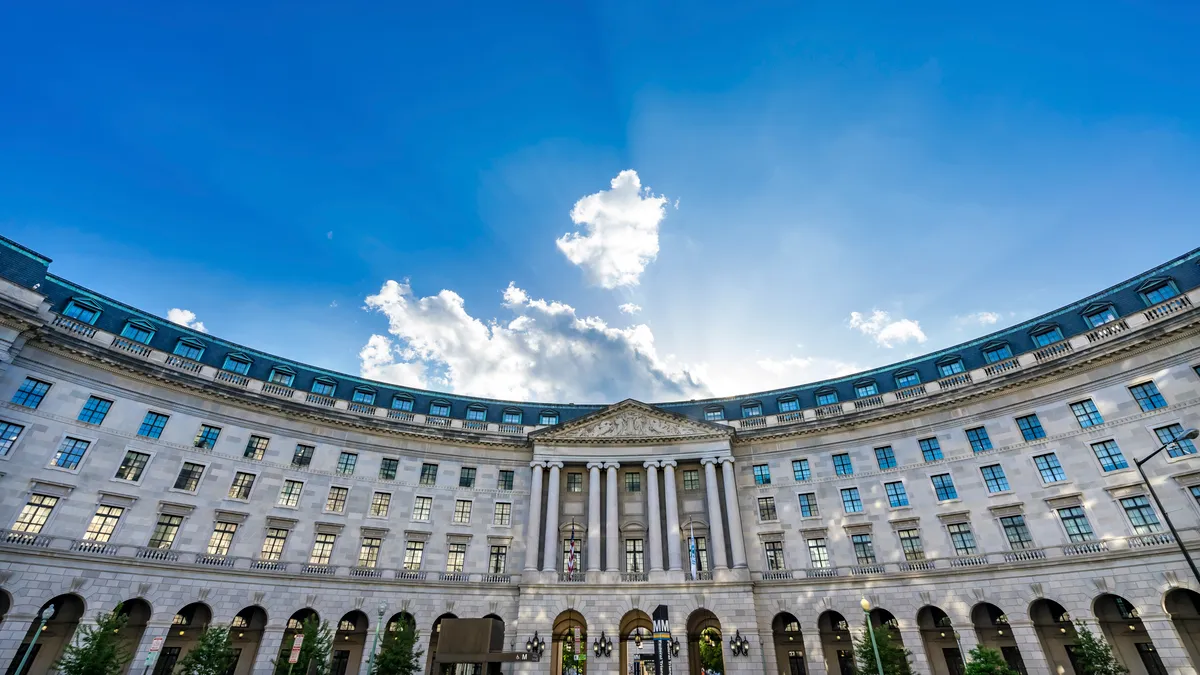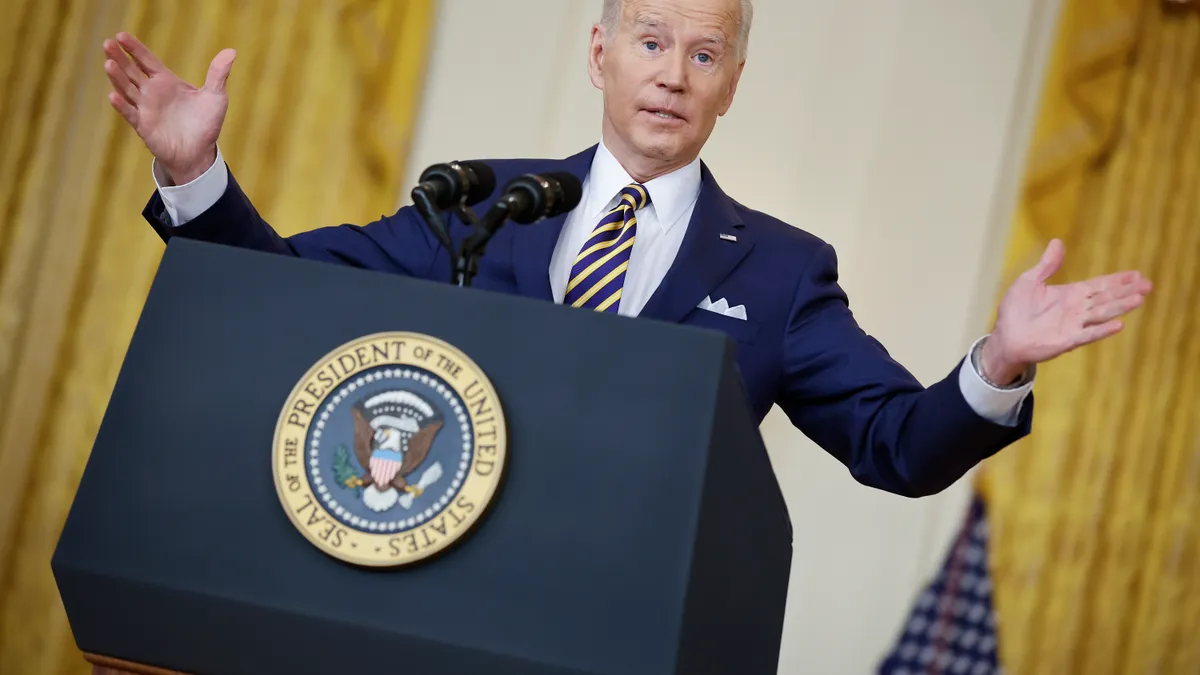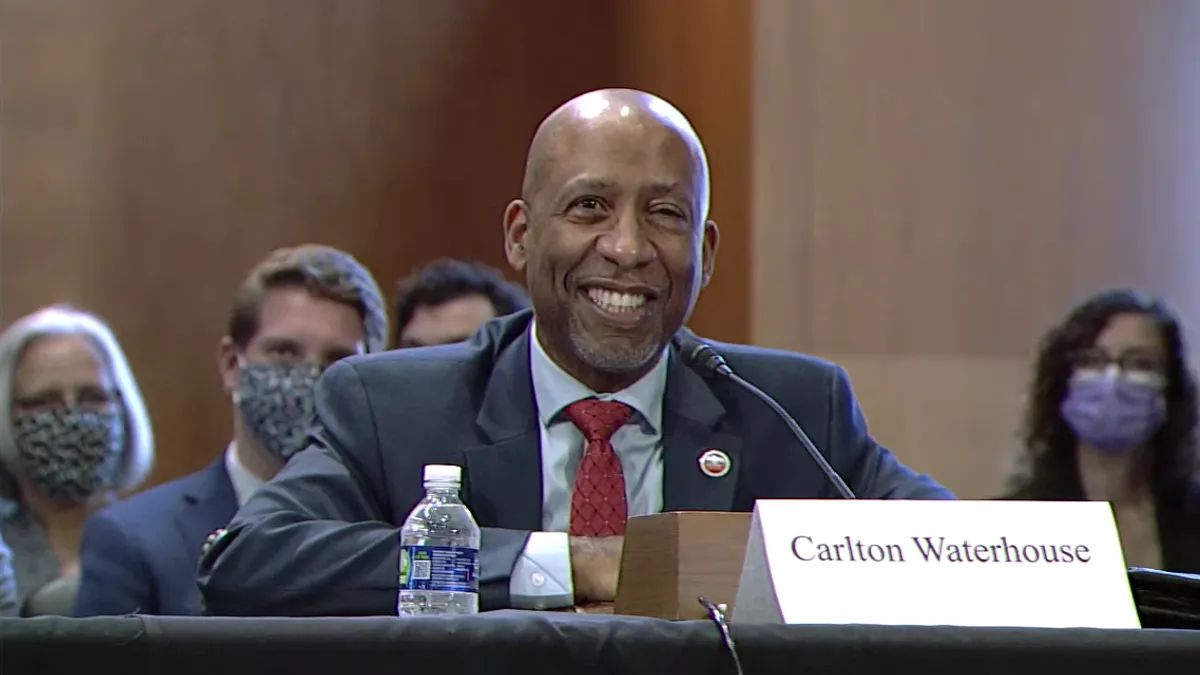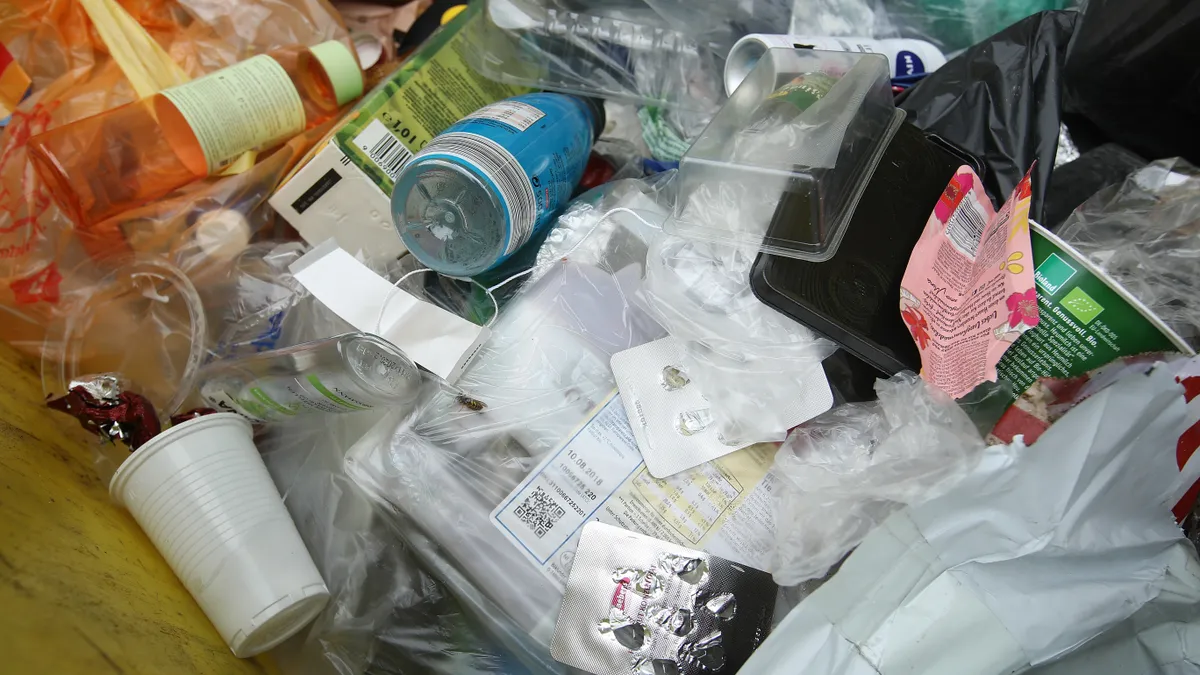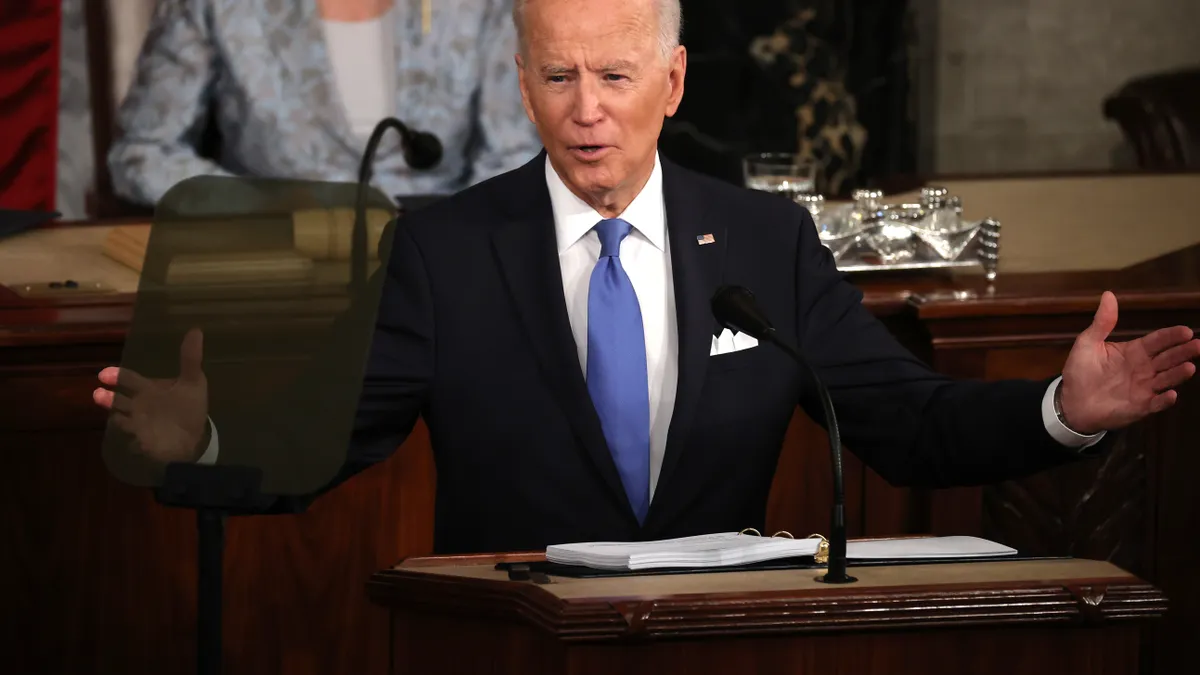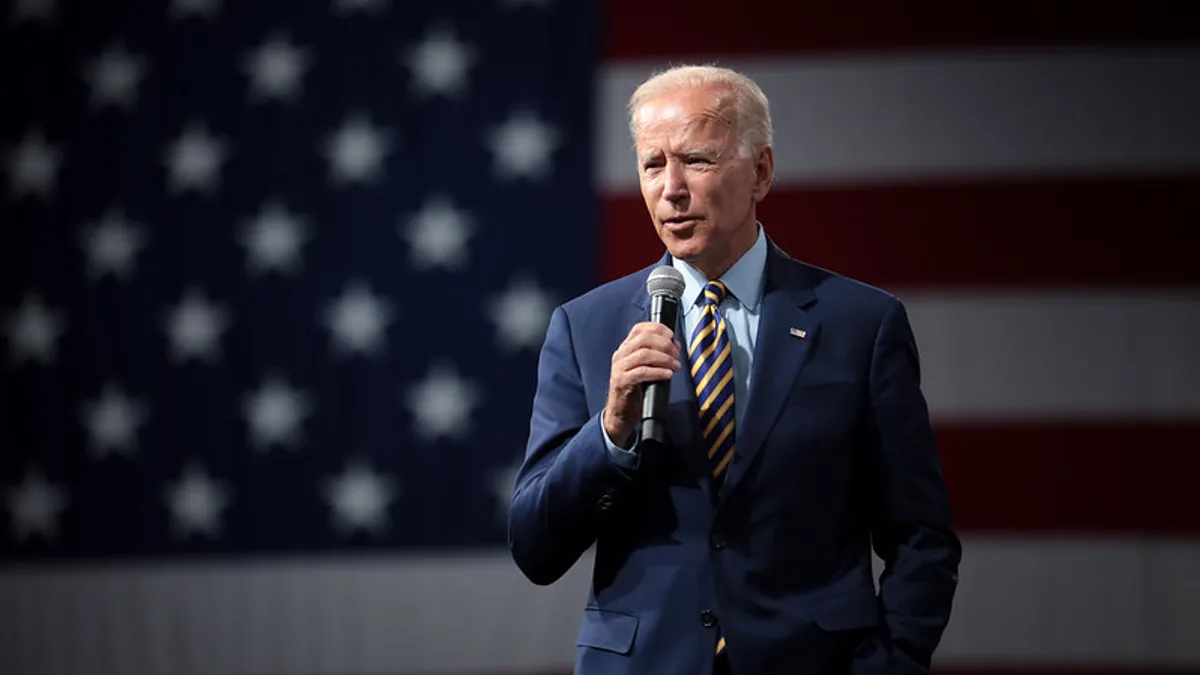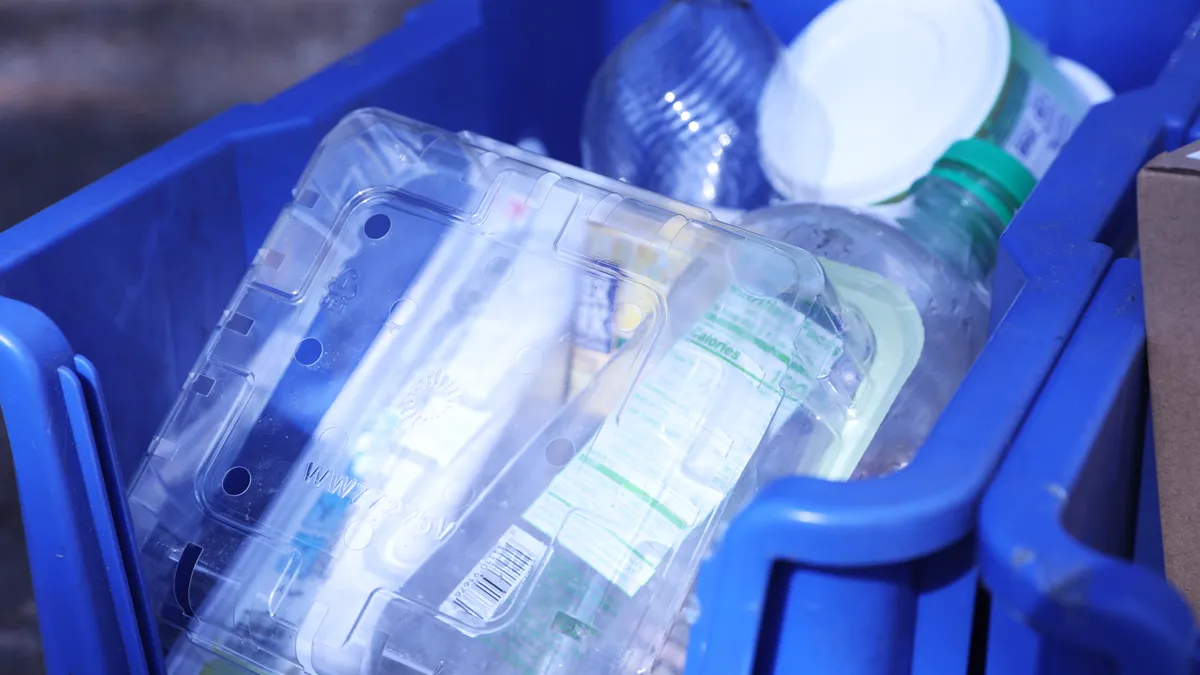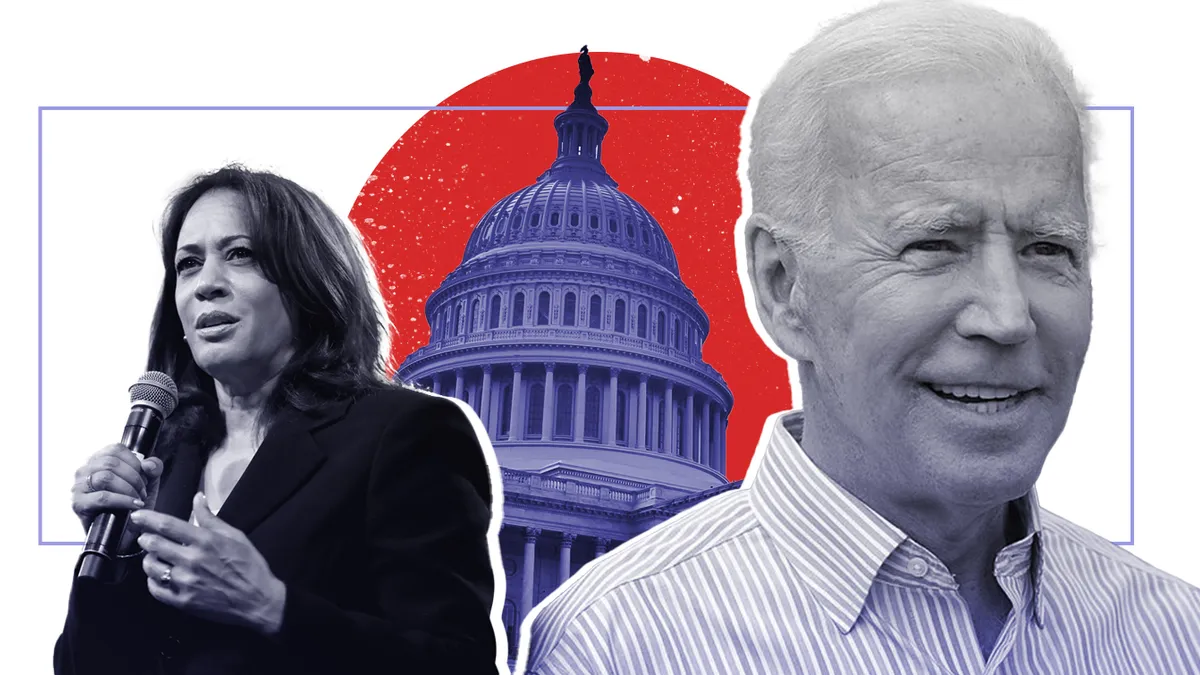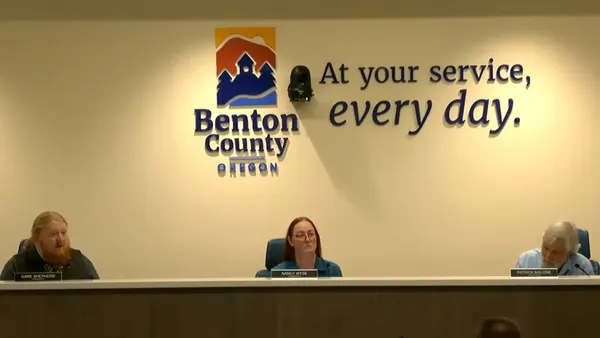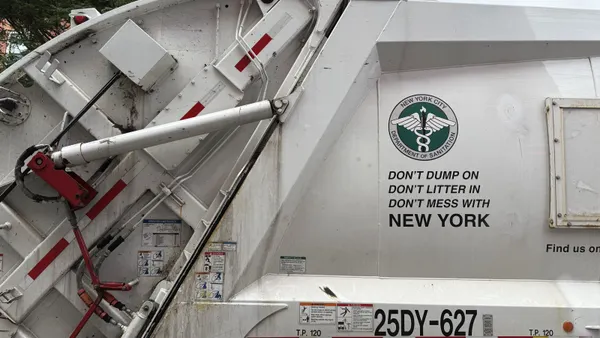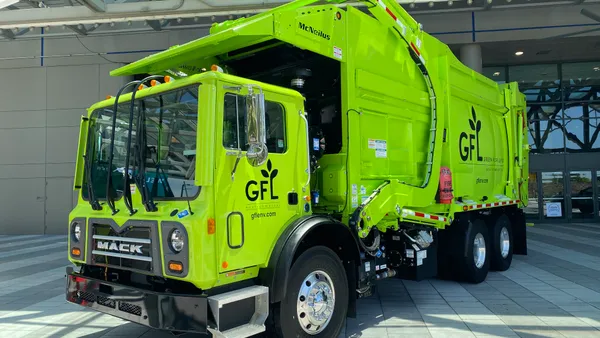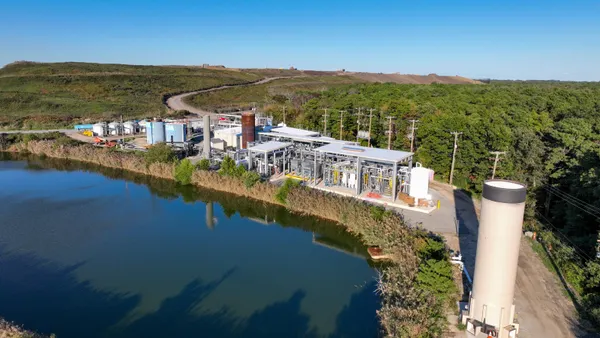Dive Brief:
- The U.S. EPA recently issued a final rule on emissions thresholds for municipal solid waste (MSW) landfills, which stakeholders see as a significant step in the Biden administration’s climate change plan to slash greenhouse gas emissions in half by 2030.
- The final rule brings clarity to a drawn-out legal battle over the timeline for implementing state or federal emission rules, industry groups say, helping landfill operators make plans to update emissions systems if necessary. Environmental groups see the rule as an important way to more quickly take a bite out of air pollution, as MSW landfills are the third-largest source of human-related methane emissions in the United States.
- The rule is significant because it applies to the majority of MSW landfills in the United States, said David Biderman, CEO of the Solid Waste Association of North America. Under the rule, about 1,590 landfill operators will have 30 months to install or update control systems to meet EPA's standards.
Dive Insight:
The EPA’s final rule, announced May 10, effectively reinstates an Obama administration-era rule established in 2016 that set forth emission guidelines for certain MSW landfills to limit greenhouse gas emissions. It directs states to either submit a plan for complying with the emissions rules or comply with a federal plan meant to cover states that do not create their own plans.
The Trump administration delayed the federal implementation after several stakeholders challenged that the rule and a separate emissions rule that also applies to landfills. In response, the Environmental Defense Fund, Natural Resources Defense Council and several states sued.
The rule was caught up in the courts until April, when the U.S. Court of Appeals for the District of Columbia Circuit threw out the delay rule after the Biden administration asked the court to vacate it so the EPA could review its position.
The resulting final rule will cover landfills in 42 states, along with Puerto Rico and the U.S. Virgin Islands, as well as the Salt River Pima-Maricopa Indian Community in Arizona.
The EPA has already approved plans from eight states, including Arizona, Delaware, Oregon, South Dakota, Virginia and West Virginia, as well as a partial plan for California. The EPA also approved both a statewide plan for New Mexico and one for the Albuquerque-Bernalillo County Air Quality Control Board. New York and Florida’s plans are awaiting approval.
The EPA also approved negative declarations from three states and two local authorities, meaning that there are no MSW landfills in those jurisdictions or that the existing MSW landfills do not need to install collection and control systems to meet the requirements.
States can still submit their own plan and seek EPA approval, as long as they do so before the federal plan implementation deadline, the EPA said.
Rachel Fullmer, senior attorney with the Environmental Defense Fund, said in a statement that the EPA's plan will “significantly reduce” methane pollution “that puts people's health at risk nationwide and especially hurts frontline communities that are already disproportionately burdened by pollution.”
The National Waste & Recycling Association, one of the industry players that initially sought to challenge the regulations, now supports the final rule. “We’re pleased that there is some certainty now. That is the big thing for us,” said spokesperson Brandon Wright.
SWANA's Biderman said the final rule helps landfill operators continue with the work of reducing greenhouse gas emissions “that began decades ago.”
But some researchers say quicker action is needed to reduce emissions from MSW landfills, which contributed 15.1% of U.S. methane emissions in 2019, according to the EPA. A recent study in the journal Environmental Research Letters said taking “fast action” to cut global methane emissions from MSW landfills, along with other major emitters such as livestock and the oil and gas industry, could slow the rate the planet is warming by up to 30%.
The Biden administration has recently hastened the timeline for achieving greenhouse gas emission goals. In April, Biden announced at a climate change summit that the United States will aim to cut its greenhouse gas emissions by between 50% and 52% of 2005 levels by 2030. More than 300 businesses signed an open letter in support of the effort. The plan did not specifically mention landfills in its list of emission reduction objectives.
An EPA spokesperson said the agency offered landfill operators guidance on emission standards and mitigation techniques through information and listening sessions earlier this year, and that the EPA “continually examines technological developments in monitoring and measuring of landfill gas/methane emissions.”



